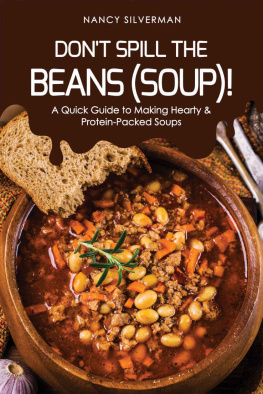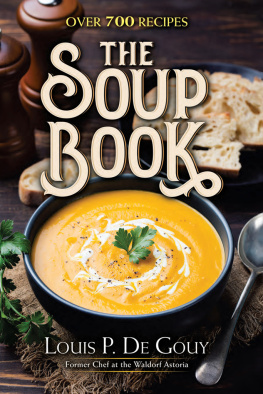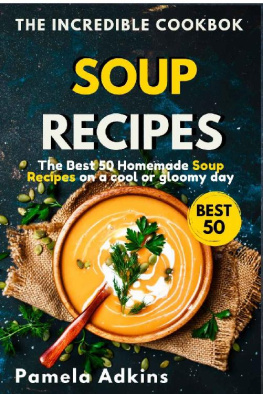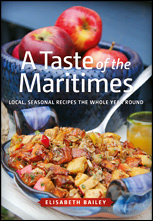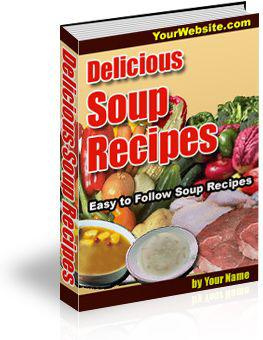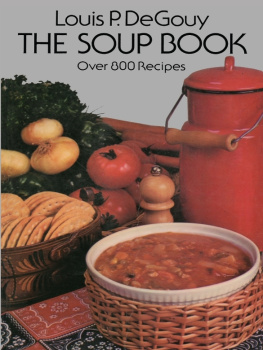Aliza Green - The Soupmakers Kitchen: How to Save Your Scraps, Prepare a Stock, and Craft the Perfect Pot of Soup
Here you can read online Aliza Green - The Soupmakers Kitchen: How to Save Your Scraps, Prepare a Stock, and Craft the Perfect Pot of Soup full text of the book (entire story) in english for free. Download pdf and epub, get meaning, cover and reviews about this ebook. year: 2013, publisher: Quarry Books, genre: Home and family. Description of the work, (preface) as well as reviews are available. Best literature library LitArk.com created for fans of good reading and offers a wide selection of genres:
Romance novel
Science fiction
Adventure
Detective
Science
History
Home and family
Prose
Art
Politics
Computer
Non-fiction
Religion
Business
Children
Humor
Choose a favorite category and find really read worthwhile books. Enjoy immersion in the world of imagination, feel the emotions of the characters or learn something new for yourself, make an fascinating discovery.

- Book:The Soupmakers Kitchen: How to Save Your Scraps, Prepare a Stock, and Craft the Perfect Pot of Soup
- Author:
- Publisher:Quarry Books
- Genre:
- Year:2013
- Rating:5 / 5
- Favourites:Add to favourites
- Your mark:
The Soupmakers Kitchen: How to Save Your Scraps, Prepare a Stock, and Craft the Perfect Pot of Soup: summary, description and annotation
We offer to read an annotation, description, summary or preface (depends on what the author of the book "The Soupmakers Kitchen: How to Save Your Scraps, Prepare a Stock, and Craft the Perfect Pot of Soup" wrote himself). If you haven't found the necessary information about the book — write in the comments, we will try to find it.
Soup, beautiful soupthe most basic of cooked foods, the universal cure-all, a nourishing way to use small amounts of food or leftovers, a dish that can always be stretched to feed more
Once again award-winning chef Aliza Green invites you into her kitchen to share her time-tested techniques for making dozens of soups, bisques, chowders, and pures. From the basic foundation of stocks to the older, European-inspired concoctions, such as Zuppa Pavese and French Onion Soup, Aliza outlines the origins, ingredients, and steps necessary to create a warm and satisfying culinary experience every time. Explore more than 100 soup recipes, plus variations on each one, from all over the world, and in every style of soup you might want to eat. Recipes include:
Hungarian Woodlands Mushroom Soup with Sour Cream and Paprika
Tuscan Pappa al Pomodoro
Senegalese Peanut and Yam Puree with Ginger
Provencal Soupe au Pistou with Savoy Cabbage, White Beans, and Leeks
Wild Salmon Chowder with Sweet Corn & Gold Potatoes
Tom Kha Gai (Thai Chicken Coconut Soup)
Cream of Cauliflower with Nutmeg and Chives
Kerala Red Lentil Soup (vegan)
Vietnamese Pho Soup with Beef Brisket
Caribbean Callalou Soup with Crabmeat and Coconut
Accompanied by Steve Legatos clearly detailed, full-color photography, your soup making success will be effortless. Inside youll find a wide-ranging collection of recipes to suit every palate including seafood, poultry, pork, beef, vegan and vegetarian formulas, and a wealth of information you will use over and over again in your culinary endeavors.
Basic Stocks: The importance of using your vegetable water, roasting juices, trimmings, seasonings, and the right vegetables to get optimum flavor from your stock
Soupmakers Tips: Ingredients prephow to correctly wash, slice, and dice ? When fresh versus frozen is important ? Using flavor enhancers such as fresh herbs and appropriate spices ? How to get the best results from the proper utensils ? Invaluable time savers ? Creative serving suggestions
Basic Techniques: How to properly chill soup, the process of cooking dried beans, the correct shredding method for cabbage, the art of cutting leaves into chiffonade, and many more
Aliza Green: author's other books
Who wrote The Soupmakers Kitchen: How to Save Your Scraps, Prepare a Stock, and Craft the Perfect Pot of Soup? Find out the surname, the name of the author of the book and a list of all author's works by series.

